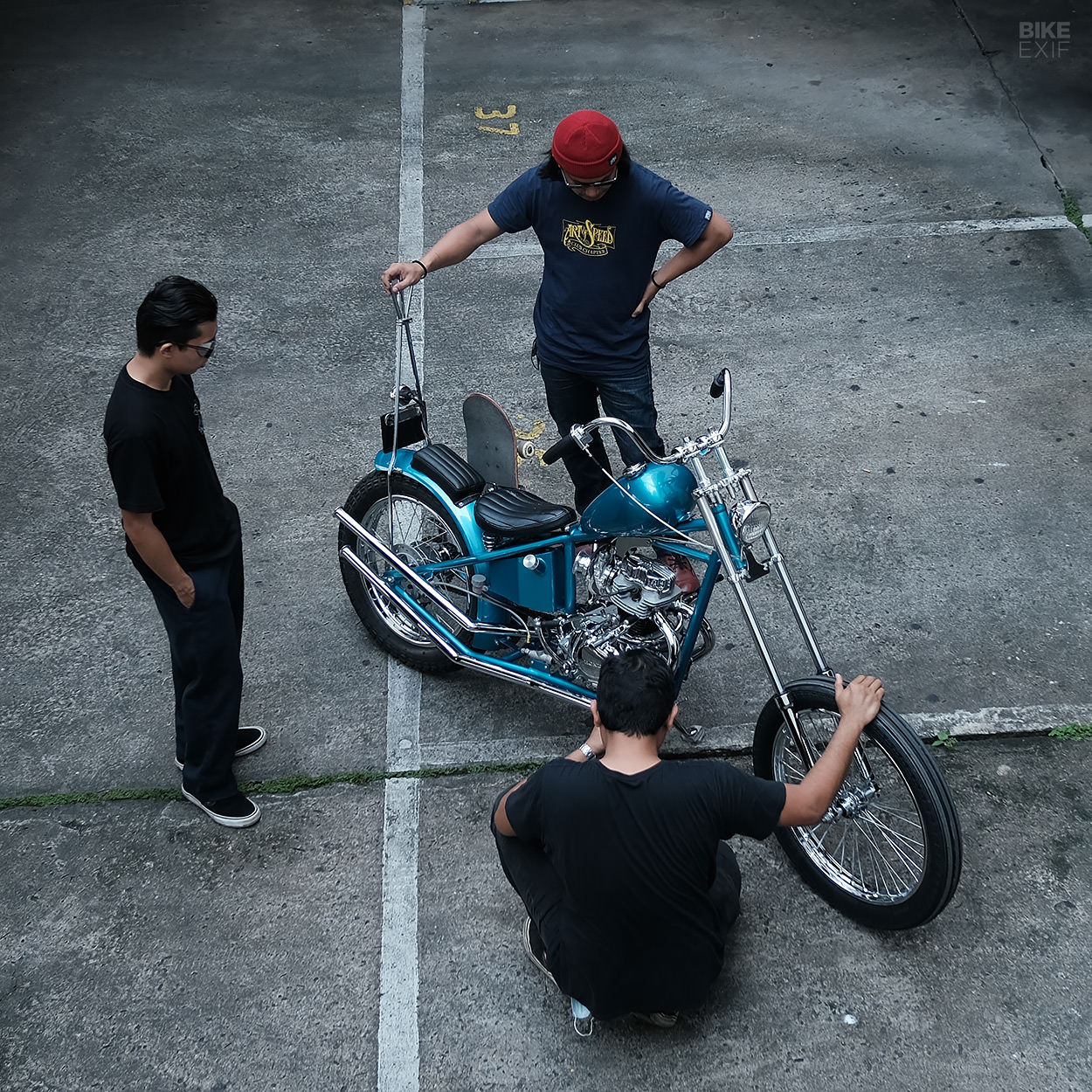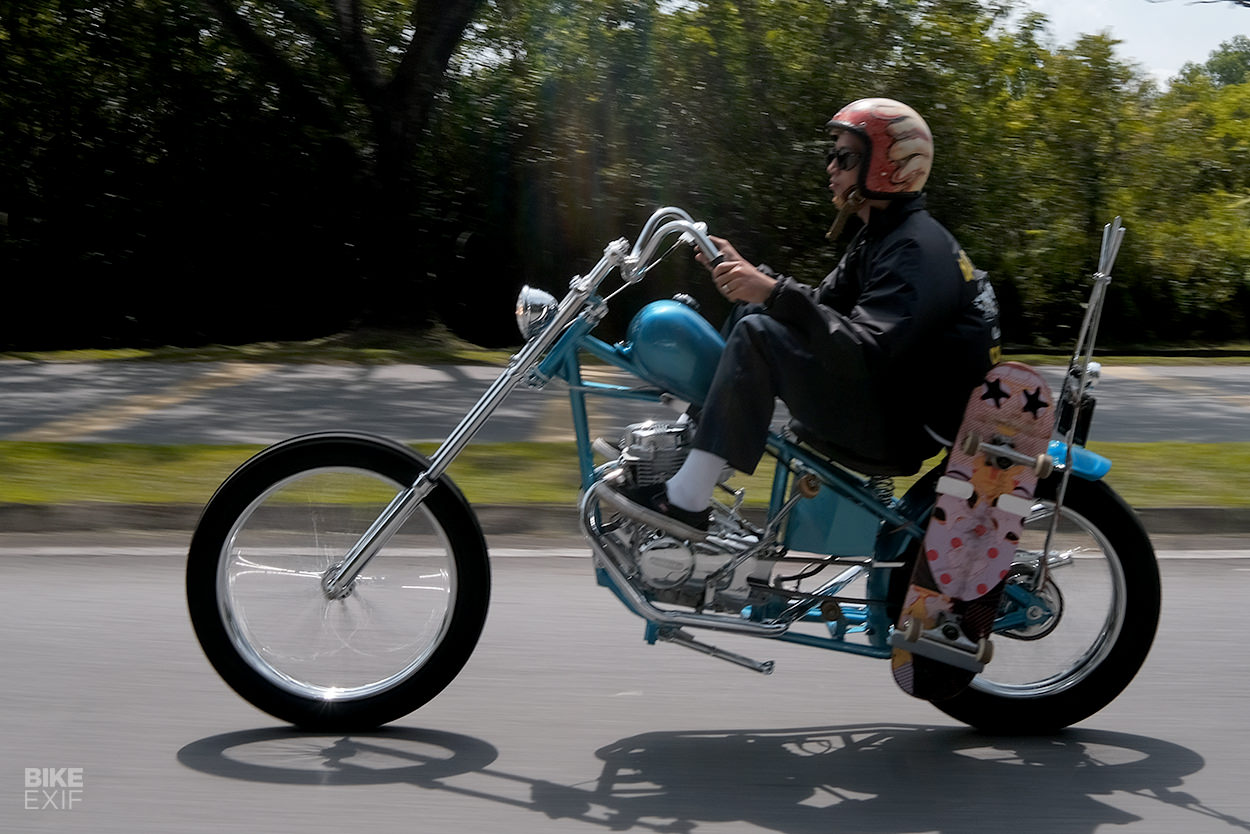
We don’t feature too many choppers: the innovation and irreverence that permeated that scene in the 60s and 70s is harder to find today. But there are builders out there who stay true to the original spirit of make-do and rebellion.
Southeast Asia is now the hotbed for this approach, with multiple builders using traditional skills to overcome limited resources and tight budgets. This wacky little Honda CG110 with a suicide shift is a great example, and comes from East Malaysian builder Nasir Morni.
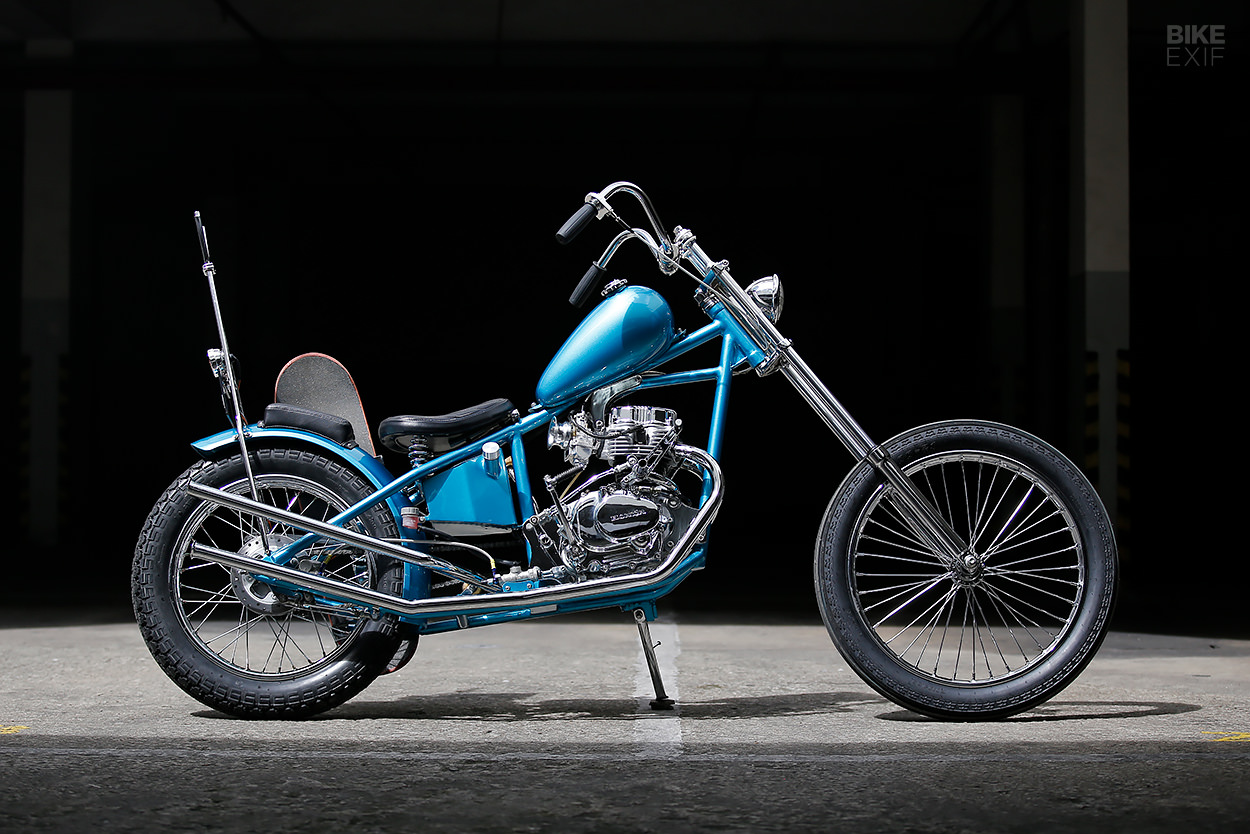
Like the better-known CG125, the CG110 is one of those bulletproof, bargain-basement singles that the average shade tree mechanic can fix with a 10mm socket. It’s only occasionally ventured into western markets, but it’s extremely common in Southeast Asia and Africa.
This mini chopper started life as a 1977 model, and it arrived in bits at Nasir’s house two years ago. He builds bikes as a hobby in his car porch, because workshop space is too expensive.
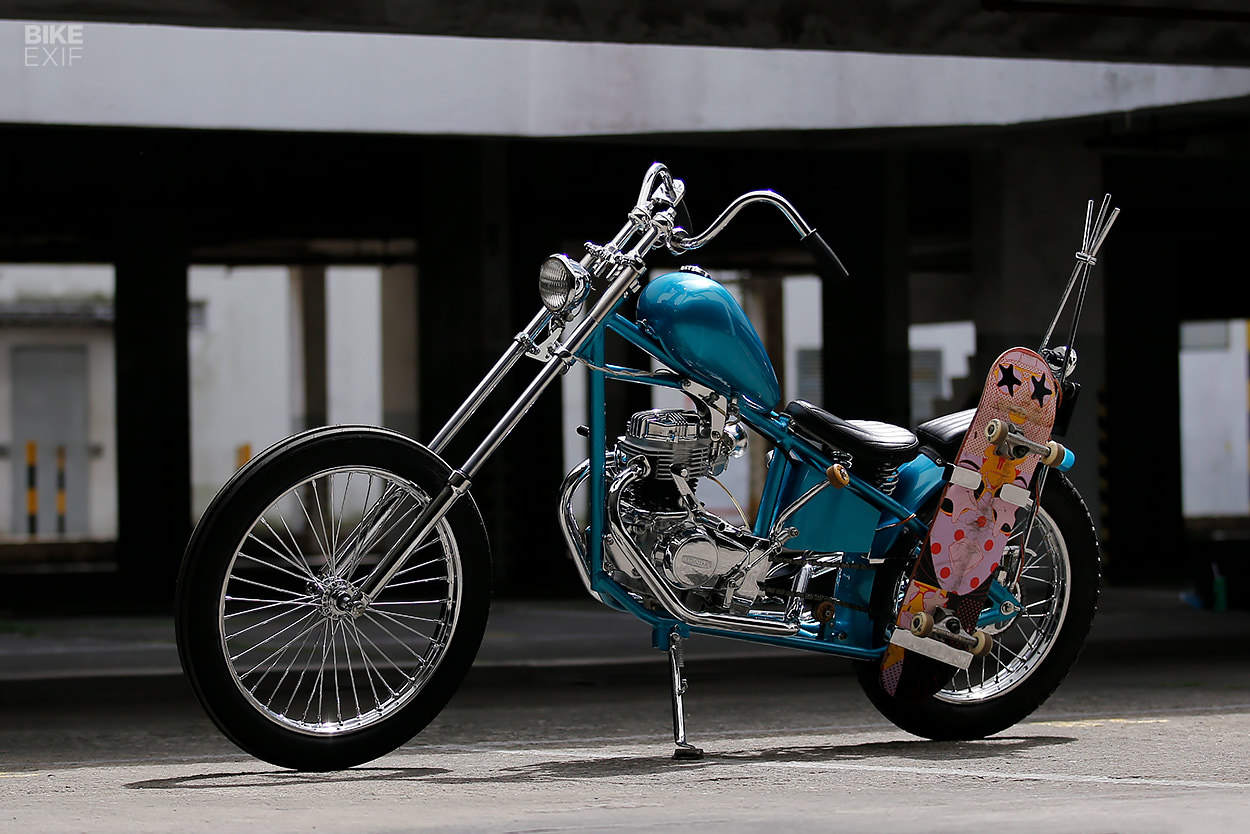
“It was perfect timing for my first 60s-style chopper,” he says. “I got a call from a friend who wanted to sell his unfinished GG110 shed-build project.
“It was only a frame and a non-running engine, but it was the perfect bike to start the chopper project. I got it for $100.”
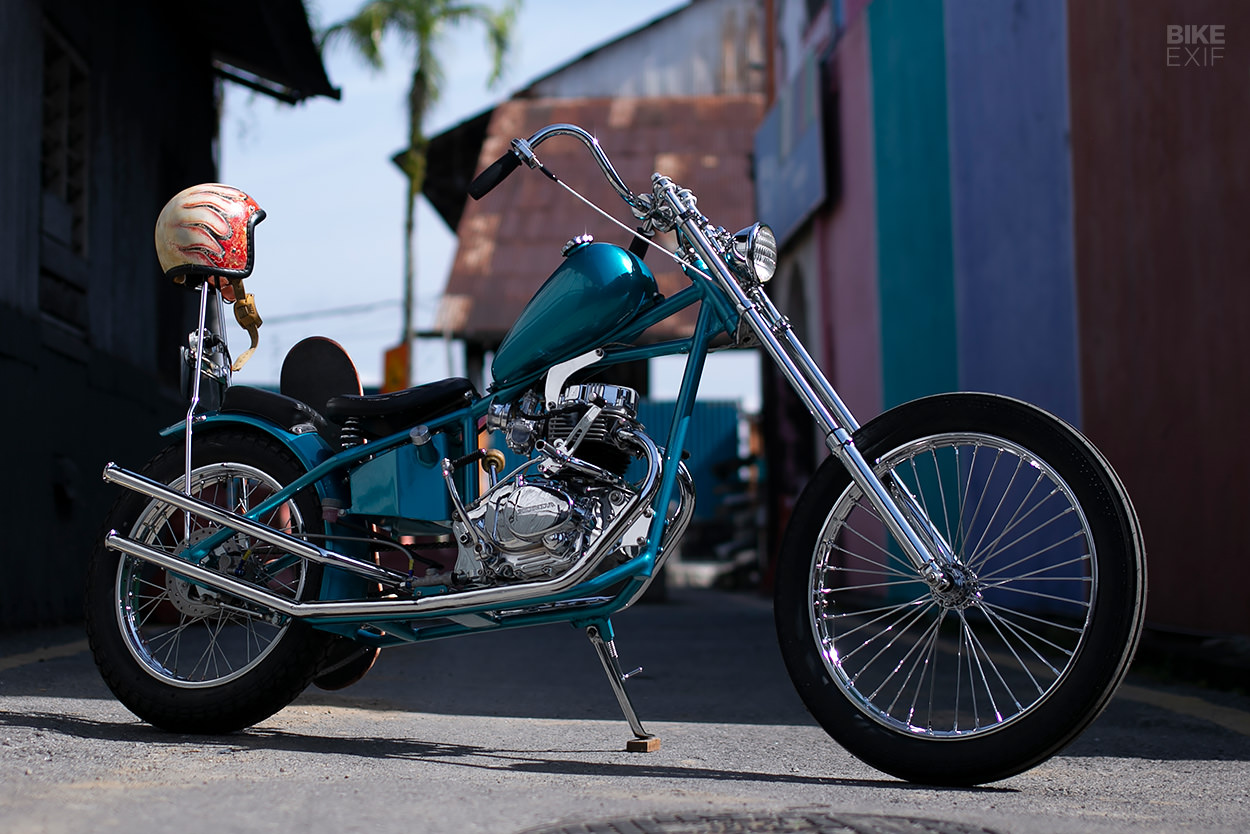
Nasir is a videographer by trade but also an avid skateboarder, and a freestyle vibe permeates his approach to bike building.
His home city of Kuching is about 600 miles from Kuala Lumpur, and the only practical way to get there is by airplane. Which means he doesn’t have easy, cost-effective access to hard parts that many Western builders take for granted.
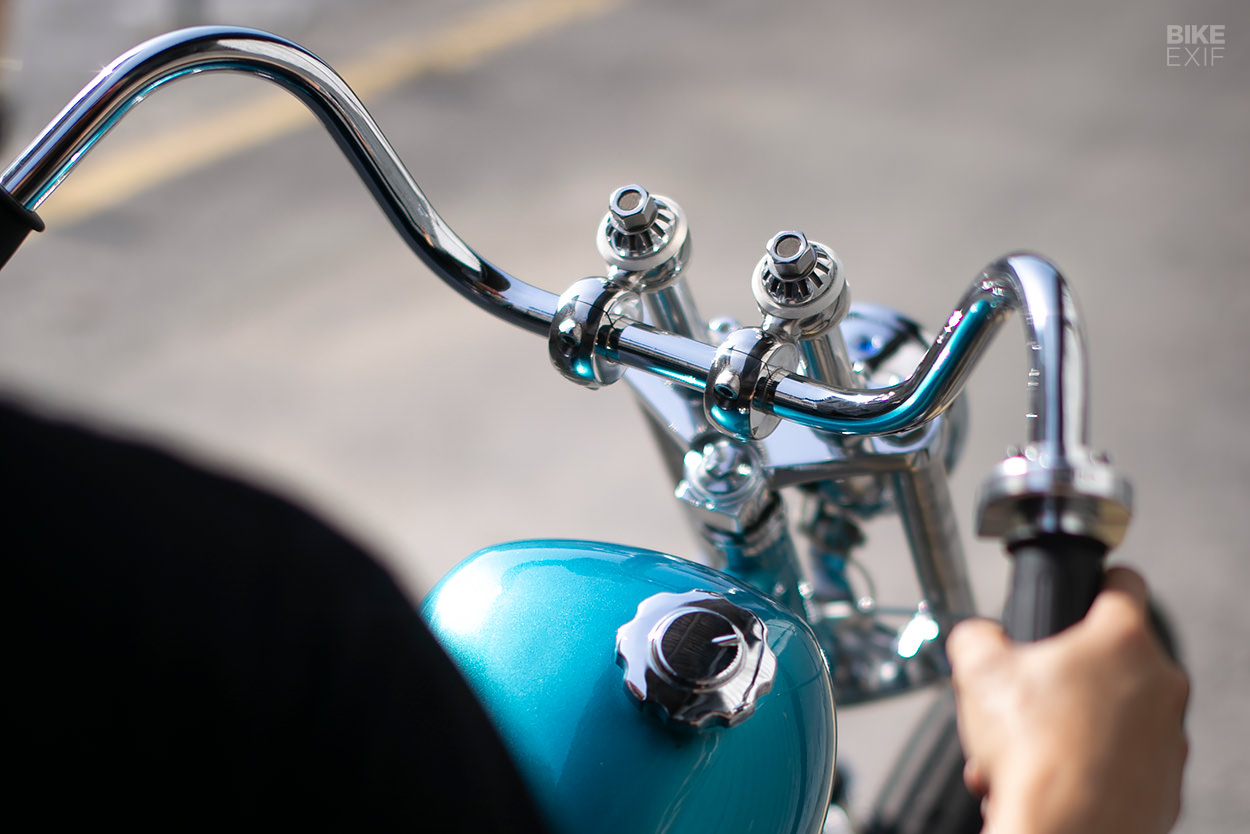
So Nasir got most of his parts from wrecker’s yards and scrap bikes, including the rims, triple trees, wheel hubs, and handlebars. “Every component that could be reused, I refurbished it and put it back,” he says.
Broken down CG110 engines are readily available in Borneo, so Nasir quickly got the air-cooled single up and running again for minimal cost.
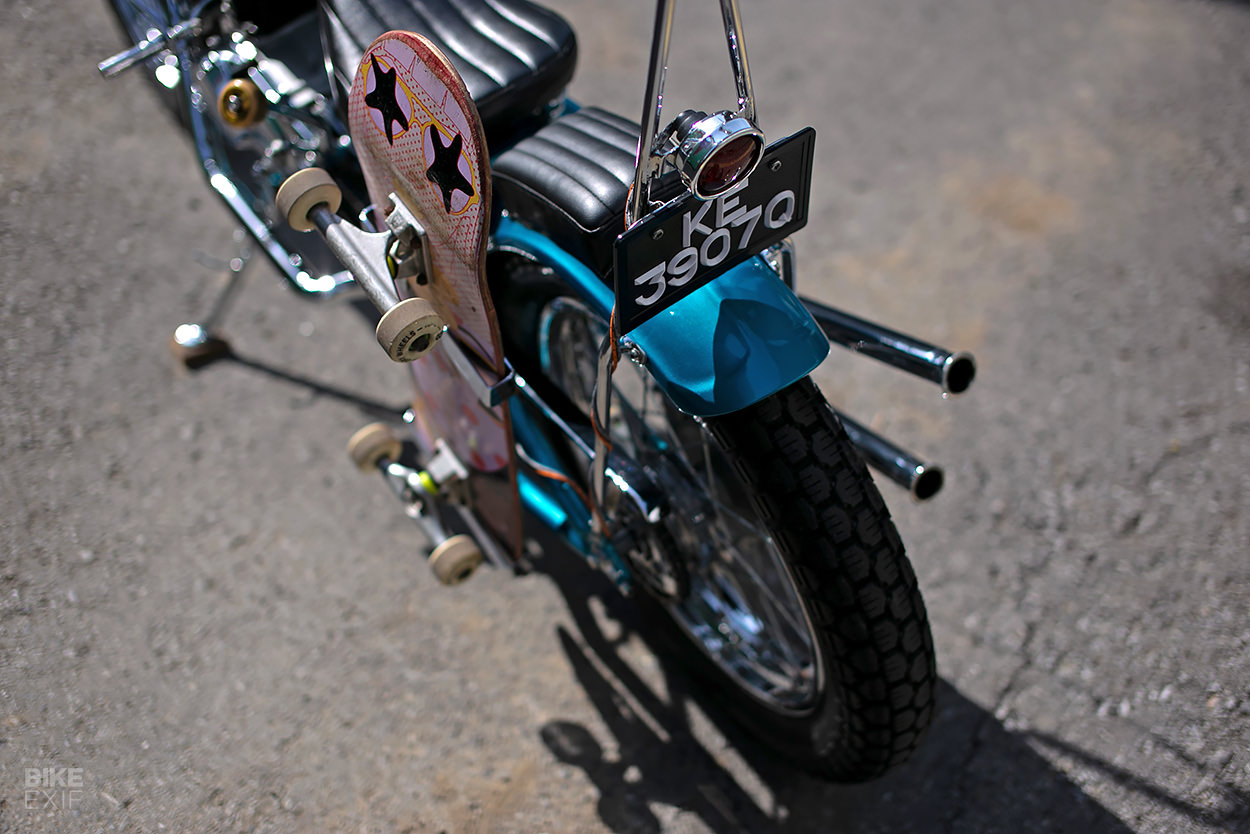
Back in the day, Nasir worked in automotive body repair, so he’s handy with metal. He’s built the rigid frame from scratch using 26mm steel tube, with a 22mm steel tube inside.
He’s also built an electronics box using 2mm mild steel plate, and a classic sissy bar with solid 12mm steel tubing shaped with a mechanical pipe bender.
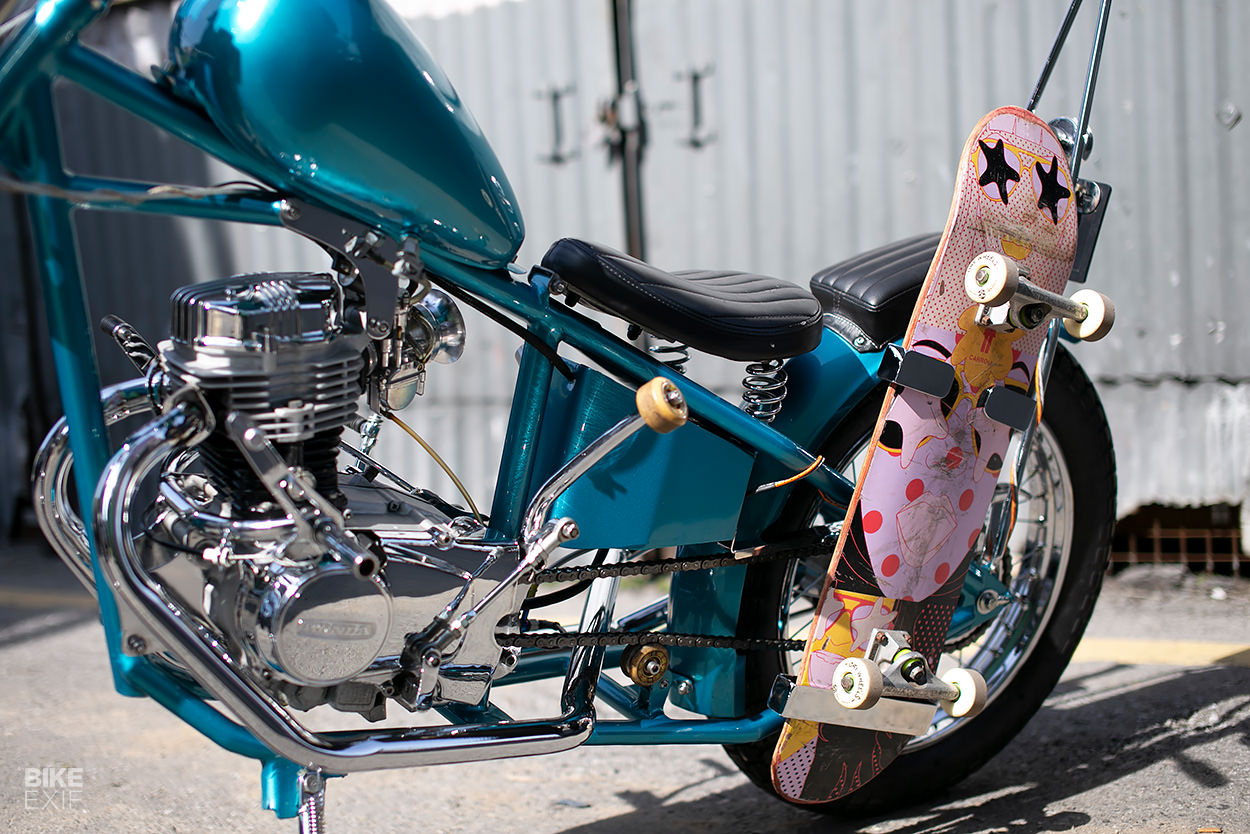
Even the foot pegs and controls are fabricated from scratch, using 22mm steel tube and skateboard bearings. “The details I love the most are the skateboarding elements,” says Nasir. “Growing up in the skate scene inspired me to add something special.”
The suicide shifter and chain tensioner use parts from Nasir’s old skate setups, and on the left side of the Honda, he’s created a detachable skateboard holder. Whenever he wants to go skating, he can slide the board onto the side of the bike and head off to the park.
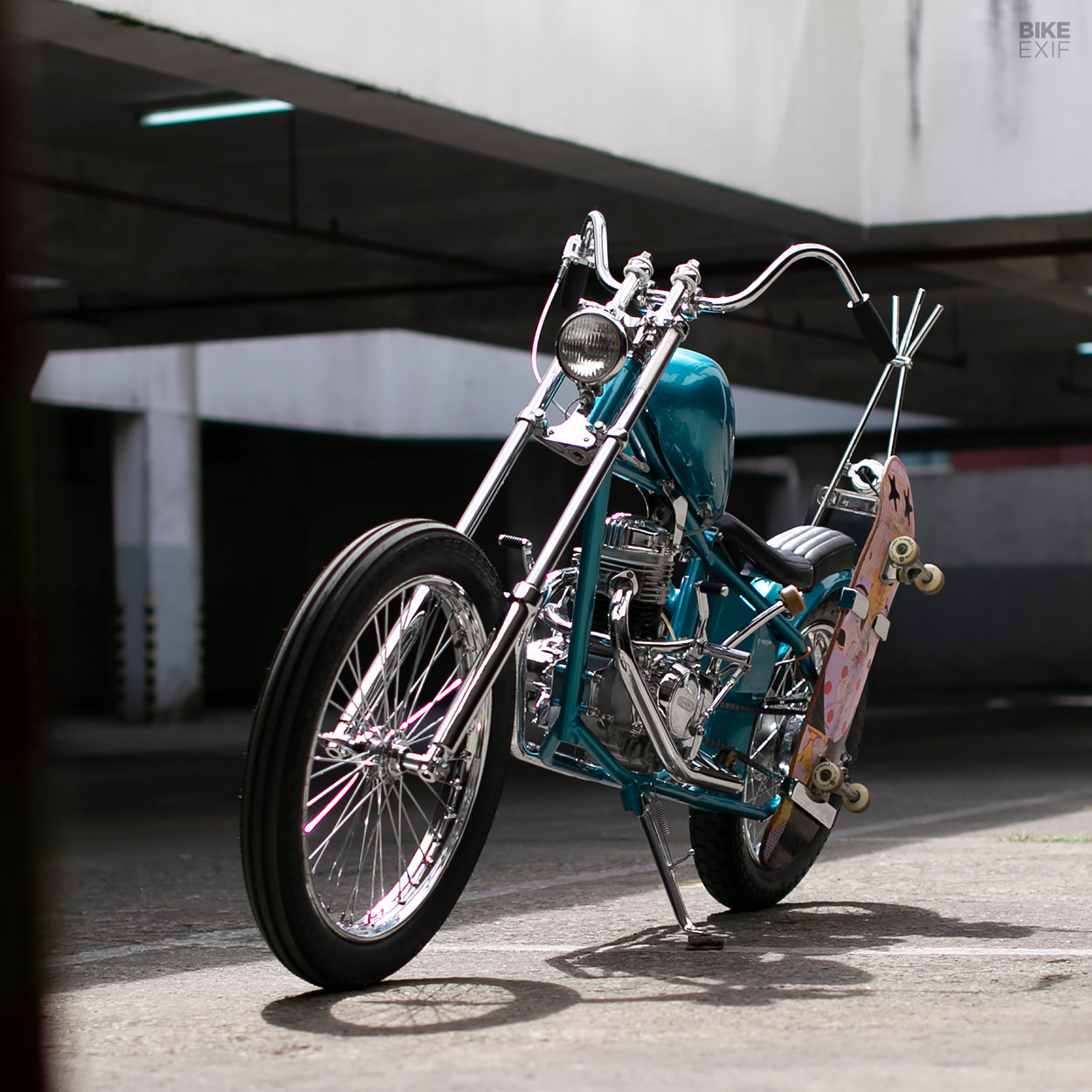
Most of the other parts are repurposed from different bikes—like the modified Yamaha RX-Z forks, and the 21-inch front wheel from an old Yamaha scrambler.
Nasir shipped the bike to the huge Art Of Speed exhibition in Kuala Lumpur, but it got damaged on the way due to a transport company slip-up. Then when it was shipped back home to Borneo, it was damaged in transit a second time.
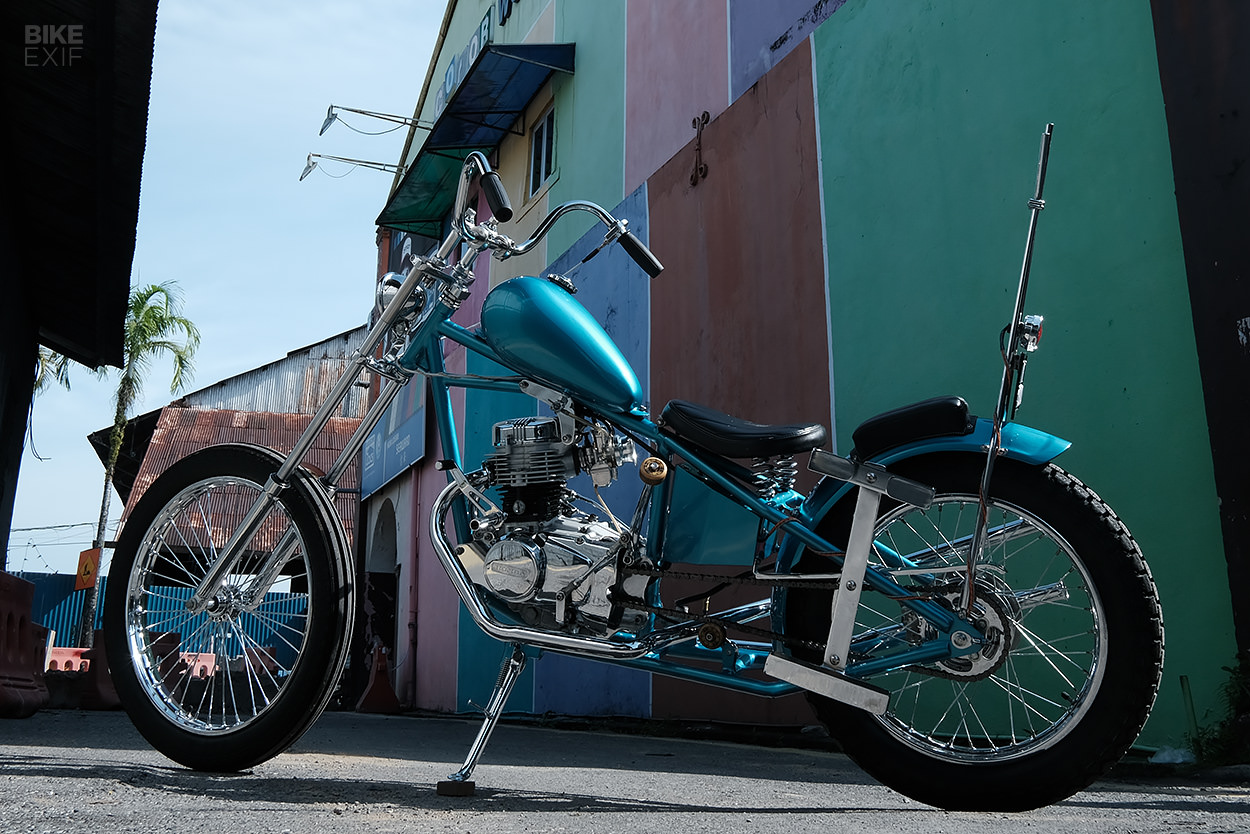
That damage is now repaired, the chrome has been redone, and the Honda has been painted for a second time. Nasir has called the Honda ‘Melati,’ which means ‘jasmine flower’ in Malay.
We’d love the Honda as it is, but love it even more knowing the difficulties that Nasir faced in getting this one on the road. Respect!
Nasir Morni Instagram | Images by Wandysaeit
